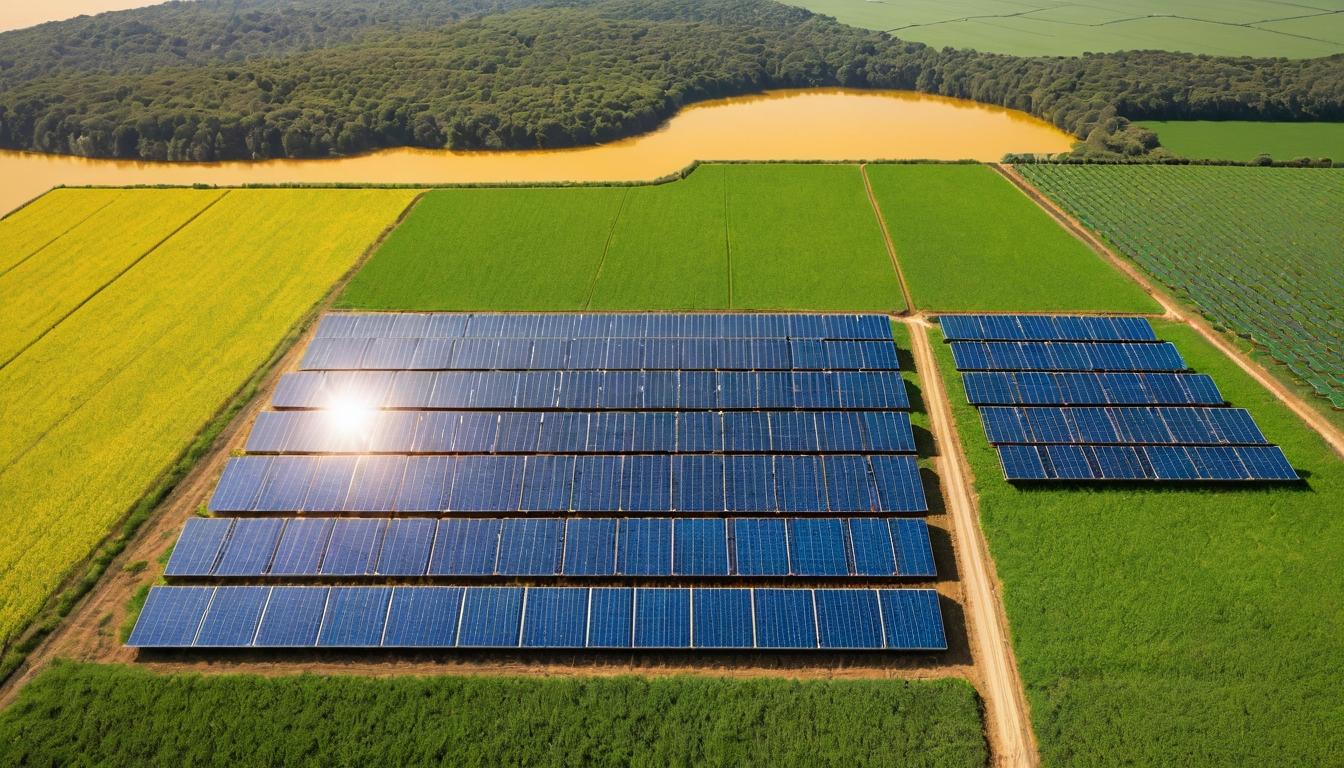The solar industry is undergoing a quiet transformation that extends far beyond the familiar rooftop arrays and sprawling desert farms. While traditional installations continue to dominate headlines, two emerging technologies—floating solar and agrivoltaics—are poised to revolutionize how we think about renewable energy deployment. These innovations aren't just about generating more power; they're about solving multiple problems simultaneously, from land use conflicts to water conservation challenges.
Floating solar, or "floatovoltaics," represents one of the most promising developments in renewable energy infrastructure. Imagine reservoirs, lakes, and even wastewater treatment ponds becoming power generators without consuming valuable real estate. The concept is deceptively simple: solar panels mounted on buoyant platforms that float on water bodies. But the benefits are anything but simple. These installations reduce water evaporation by up to 70%, a critical advantage in drought-prone regions. They also operate more efficiently than their land-based counterparts because water naturally cools the panels, boosting electricity production by 5-15%.
What makes floating solar particularly compelling is its ability to turn existing infrastructure into dual-purpose assets. Municipal water reservoirs, hydroelectric dam reservoirs, and industrial cooling ponds can now serve double duty. In California, where water scarcity and energy demands often collide, floating solar projects are gaining traction as elegant solutions to both problems. The technology has advanced rapidly, with new anchoring systems and durable materials that withstand harsh aquatic environments for decades.
Meanwhile, agrivoltaics—the practice of co-locating solar panels and agriculture—is challenging the notion that we must choose between food production and clean energy. Rather than seeing solar farms and farms as competing land uses, agrivoltaics demonstrates how they can work in harmony. The approach involves elevating solar panels high enough to allow farming equipment and livestock to operate underneath, or spacing panels to permit adequate sunlight for crops.
The benefits extend beyond mere coexistence. Studies show that certain crops actually thrive in the partial shade provided by solar arrays. Leafy greens, berries, and some root vegetables produce higher yields when protected from intense midday sun. The microclimate created by the panels reduces water evaporation from soil, meaning farmers use less irrigation. For livestock, the shade offers relief from heat stress, improving animal welfare and productivity.
This symbiotic relationship represents a paradigm shift in how we approach land management. Instead of viewing solar development as a threat to agriculture, we're beginning to see it as a potential partner. Farmers struggling with volatile commodity prices now have a stable secondary income stream from leasing land for solar installations while continuing their agricultural operations.
The financial models supporting these technologies are evolving just as rapidly as the technical aspects. Community solar gardens allow multiple subscribers to benefit from a single large installation, making solar accessible to renters and those with unsuitable roofs. Power purchase agreements have become more sophisticated, with terms that protect both developers and host sites. Insurance products specifically designed for these novel installations are emerging, reducing risk for early adopters.
Regulatory frameworks, however, haven't kept pace with technological innovation. Zoning laws written decades ago often don't account for these hybrid land uses. Permitting processes can be cumbersome when multiple agencies have jurisdiction over the same project. Some communities worry about visual impacts, particularly for floating solar on recreational water bodies. Addressing these concerns requires thoughtful planning and community engagement, not just technical solutions.
Manufacturing advances are driving down costs while improving performance. Bifacial panels that capture light from both sides are particularly well-suited for floating installations, where reflected light from water surfaces provides additional energy capture. Tracking systems that follow the sun's path are becoming more affordable and reliable. And new mounting systems allow for quicker installation and easier maintenance.
The environmental implications extend beyond carbon reduction. Floating solar can help reduce algal blooms by limiting sunlight penetration in nutrient-rich waters. Agrivoltaics can support pollinator habitats when native vegetation is maintained beneath panels. Both approaches can help preserve open space by making dual use of existing developed areas.
As climate change intensifies, the resilience benefits of these distributed energy systems become increasingly valuable. Unlike large centralized power plants vulnerable to extreme weather, distributed solar installations can continue operating during grid outages when paired with storage. This reliability is crucial for critical facilities like water treatment plants and agricultural operations.
The human dimension of this transition deserves equal attention. Workforce development programs are training solar installers with specialized skills for these unique applications. Educational institutions are developing curricula that bridge traditional disciplines, creating professionals who understand both renewable energy and environmental management.
Looking ahead, the integration of energy storage with these systems will unlock even greater potential. Floating solar paired with pumped hydro storage creates a closed-loop system that manages both water and energy resources. Agrivoltaics combined with battery storage can provide reliable power for precision agriculture equipment and irrigation systems.
What's clear is that the future of solar isn't just about building more panels—it's about building smarter systems that serve multiple purposes and solve multiple problems. The most successful projects will be those that consider the broader ecosystem, both natural and human, in which they operate. As these technologies mature and scale, they offer a template for how we might approach other sustainability challenges: not with single-purpose solutions, but with integrated approaches that recognize the interconnectedness of our energy, water, and food systems.
The revolution happening in solar today isn't just technological—it's philosophical. We're learning to see opportunities where we once saw limitations, to create value where we once saw conflict. And in doing so, we're building not just a cleaner energy system, but a more resilient and integrated world.
The solar revolution's next frontier: How floating panels and agrivoltaics are reshaping renewable energy

